Year-End Touring in a Porsche 911: From the Winter Sea of Japan to Mountain Winding Roads
公開日:2022.01.13
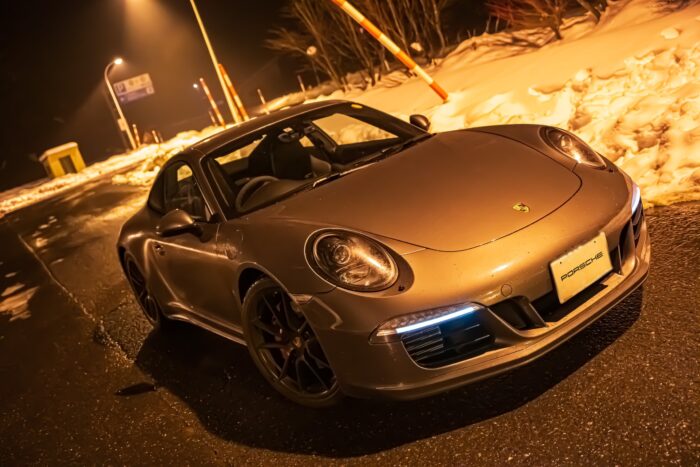
コンテンツ
Driving Along the Sea of Japan from Tsuruga to Kyogamisaki
The morning in Tsuruga City was bitterly cold. Fortunately, the snow from yesterday had stopped, and there seemed to be no accumulation.
Climbing into the ice-cold 911, I carefully warmed up the engine, PDK, and suspension components at a slower pace than usual.
Both the 981 Boxster and this 991.1 Carrera 4 GTS take quite a while for the oil temperature to rise. Sometimes it can take 15 to 20 minutes to reach the optimal temperature. Especially with the GTS, the additional center cooler at the front might be affecting this.
Keeping warm with the seat heater, I decided to head west along the Sea of Japan coast today. Initially, I planned to go toward Kanazawa and Niigata, but since many of the fast roads were impassable due to heavy snow, I changed plans and headed toward Kyoto and Hyogo instead.
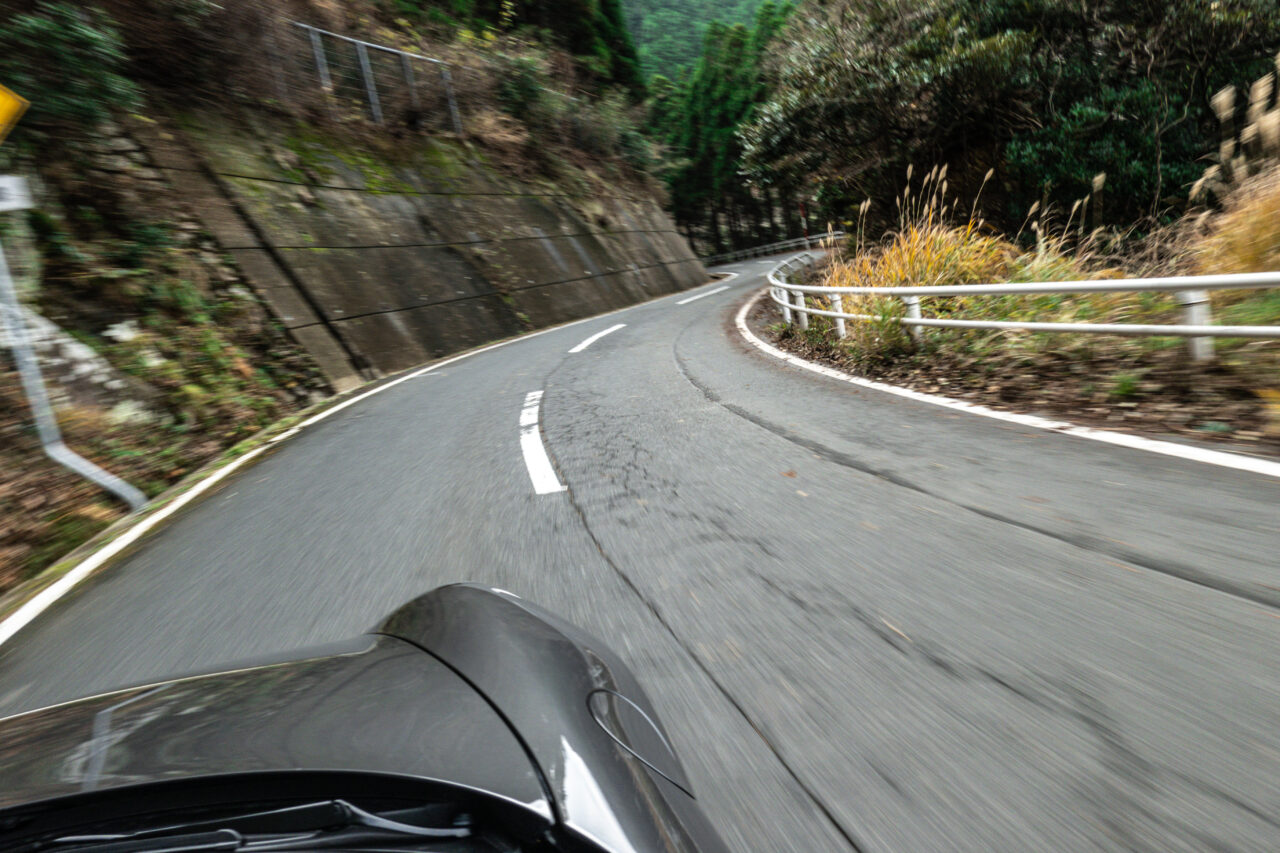
First, I took Prefectural Route 33 toward the Tsuruga Peninsula. The section connecting the east and west of the peninsula is a particularly enjoyable fast road, allowing a good pace. Driving along the west side of the peninsula tracing the coastline, enjoying the winter Sea of Japan scenery, was truly special.
Next, I skirted around the Mikata Five Lakes and continued westward. Then I entered Route 162, where traffic thinned and the pace picked up, enjoying an exquisite winding road along the sea with the Sea of Japan on the right.
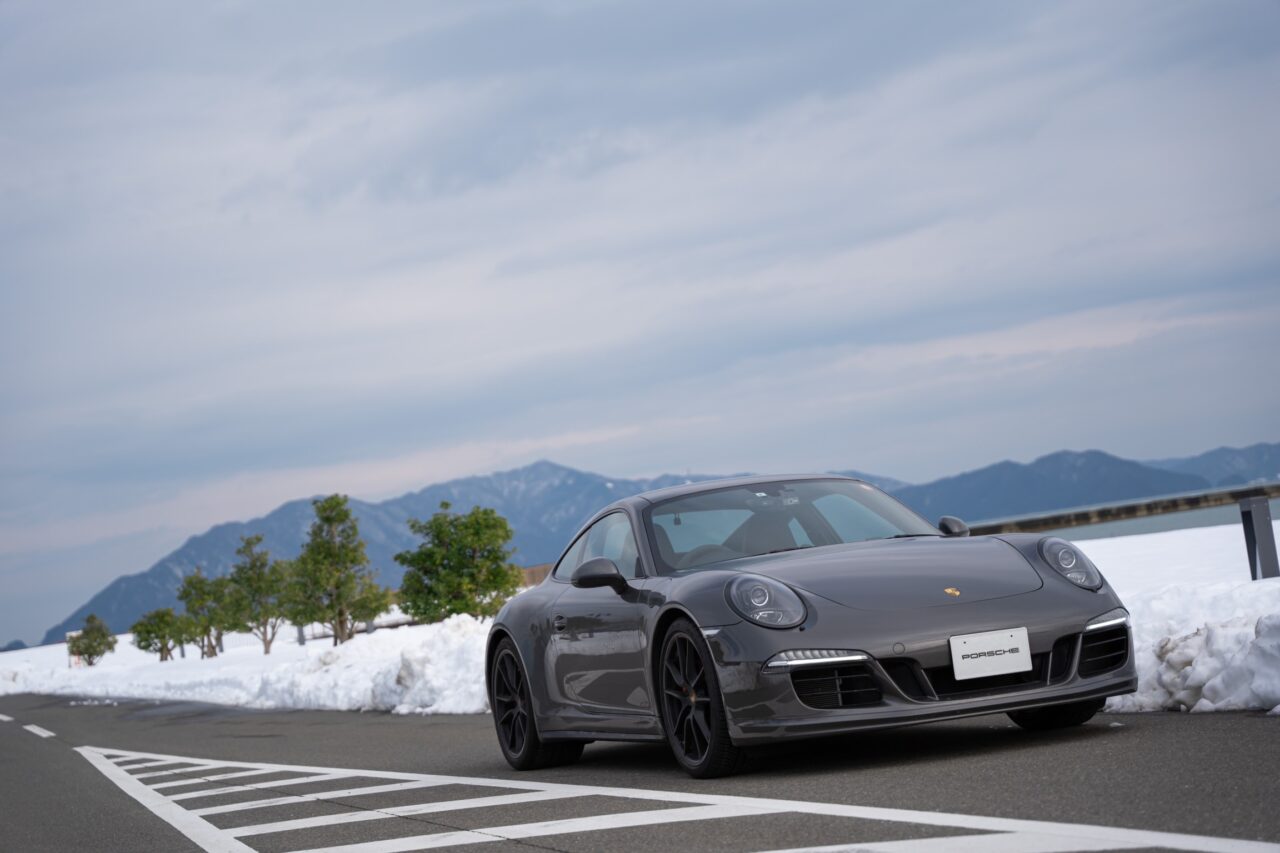
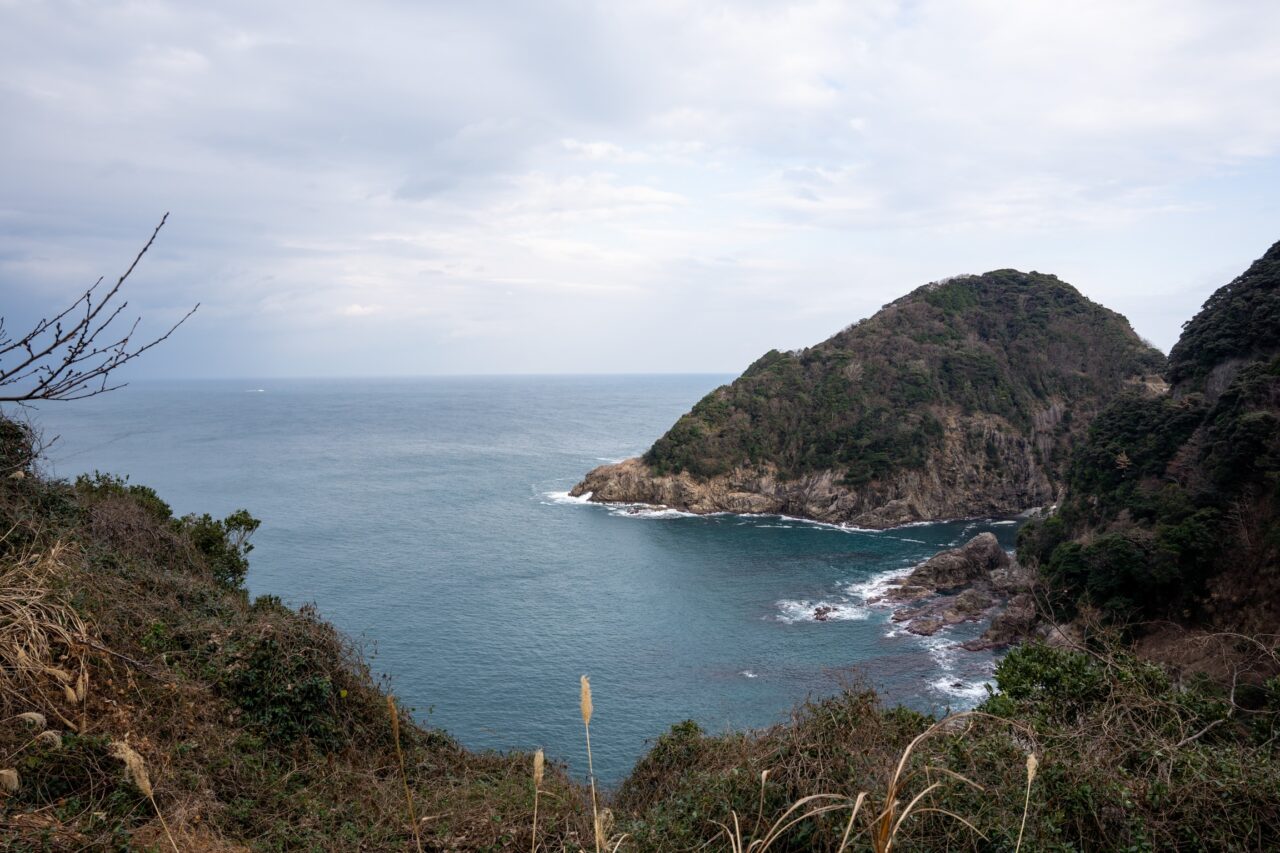
Entering Maizuru and then Miyazu, I considered stopping at the famous Amanohashidate but skipped it due to the expected crowd.
Heading north on Route 178 toward Kyogamisaki, the roads here are excellent but crowded with tourists, so I couldn’t push the pace. As you approach Kyogamisaki, you can enjoy even more delightful coastal winding roads, so it’s best to leave some distance from the car ahead and then drive at your own pace.
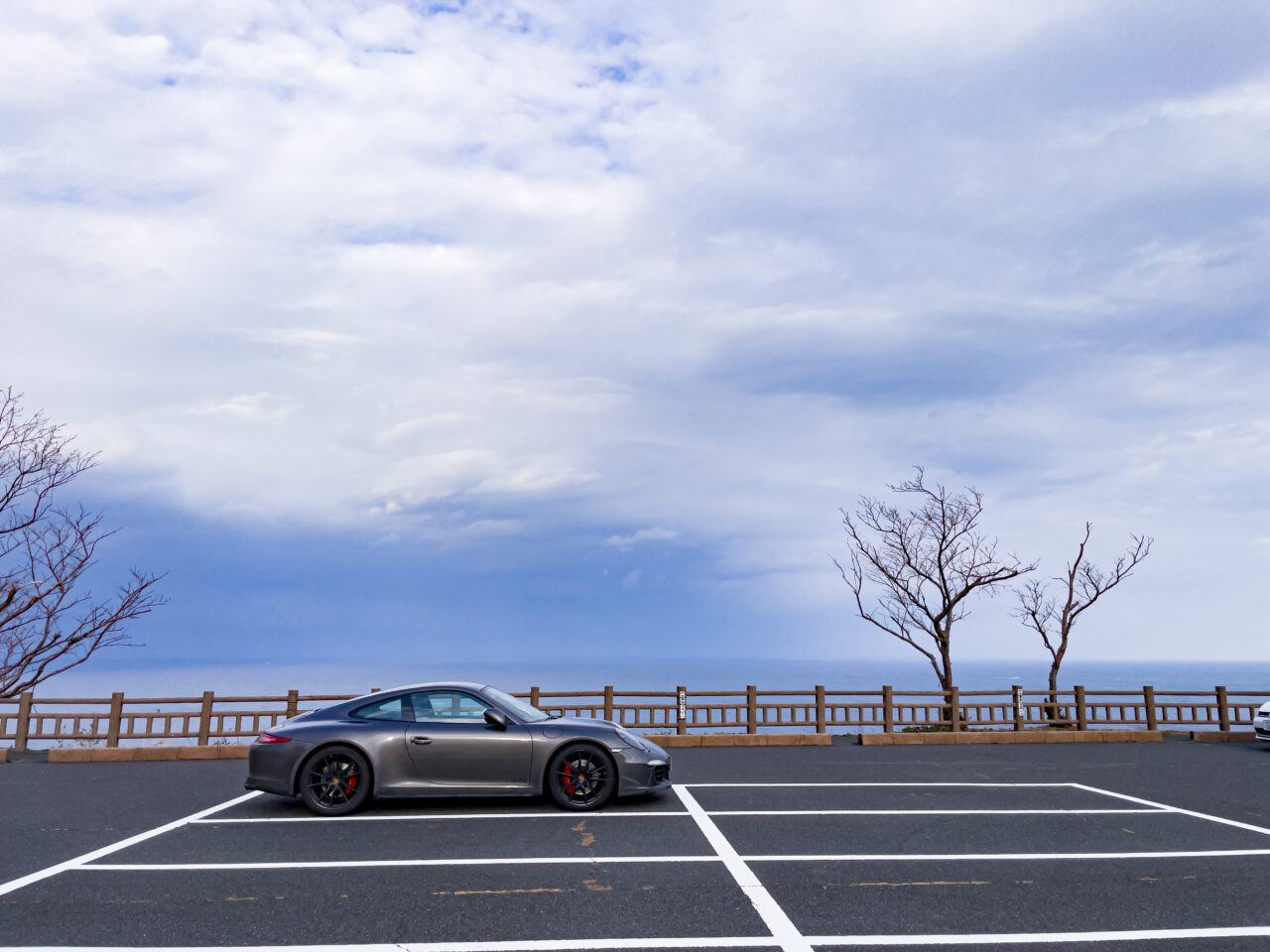
I took a short break at the Kyogamisaki lighthouse parking lot while looking for the next destination.
“Should I keep driving through the mountains of Hyogo?” or “Should I push further west and take the 911 toward Okayama?” After some thought, deciding that I wanted to keep driving on fast roads, I finally chose Okayama. I booked a hotel in Tsuyama, Okayama for the night via Jalan.
The 911 Tackles Snowy Mountain Winding Roads
I drove Route 178 toward Toyooka. After passing through the Kawanashi Tunnel and reaching the mountain pass, there was definitely a lot of snow. Although the roads were cleared, the scenery was unmistakably that of a snowy region.
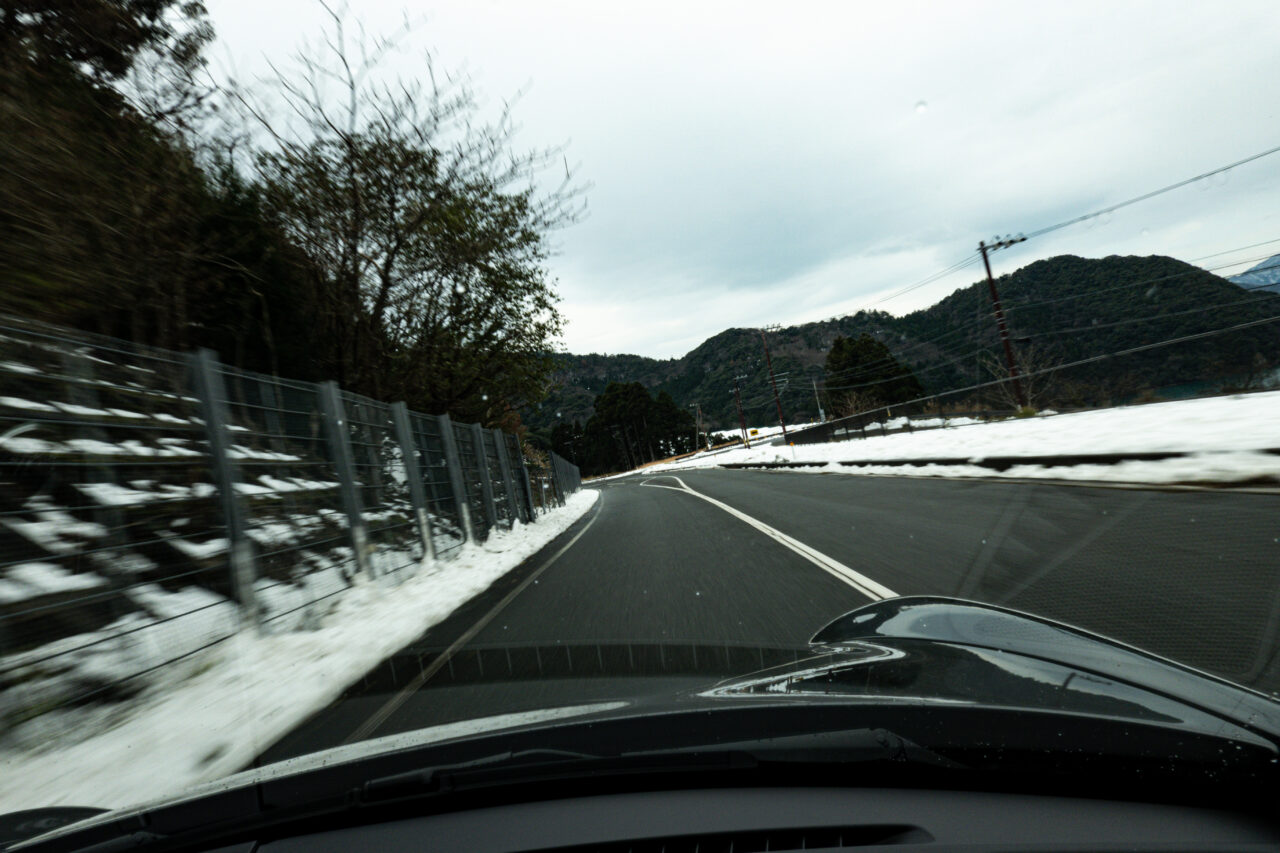
Continuing west on Route 178, including some bypass sections, I arrived at the San’in Kaigan Geopark Hamazaka-no-Sato roadside station just as night fell and darkness closed in.
There was still quite a distance to Tsuyama, and since I planned to cross deep mountain passes, I felt a bit uneasy—but this only fueled my sense of adventure. Feeling excited, I entered Tottori City and headed south on Route 53.
Then I turned left onto the much-talked-about Route 482. This section from Tottori to Okayama is a famous road I’ve introduced many times on the blog. But at this dark, snowy hour, no one else was turning onto Route 482.
From here, it was a completely solo journey. No cars ahead or behind.
Trusting the 911, I pressed the accelerator, leaving the village behind and climbing the mountain road. The outside temperature was below zero, but the road surface was barely dry.
With no streetlights, the headlights were my only guide in the pitch-black night. Switching to Sport Plus mode, the PDLS (Porsche Dynamic Light System) control changes, illuminating the direction of travel even more quickly.
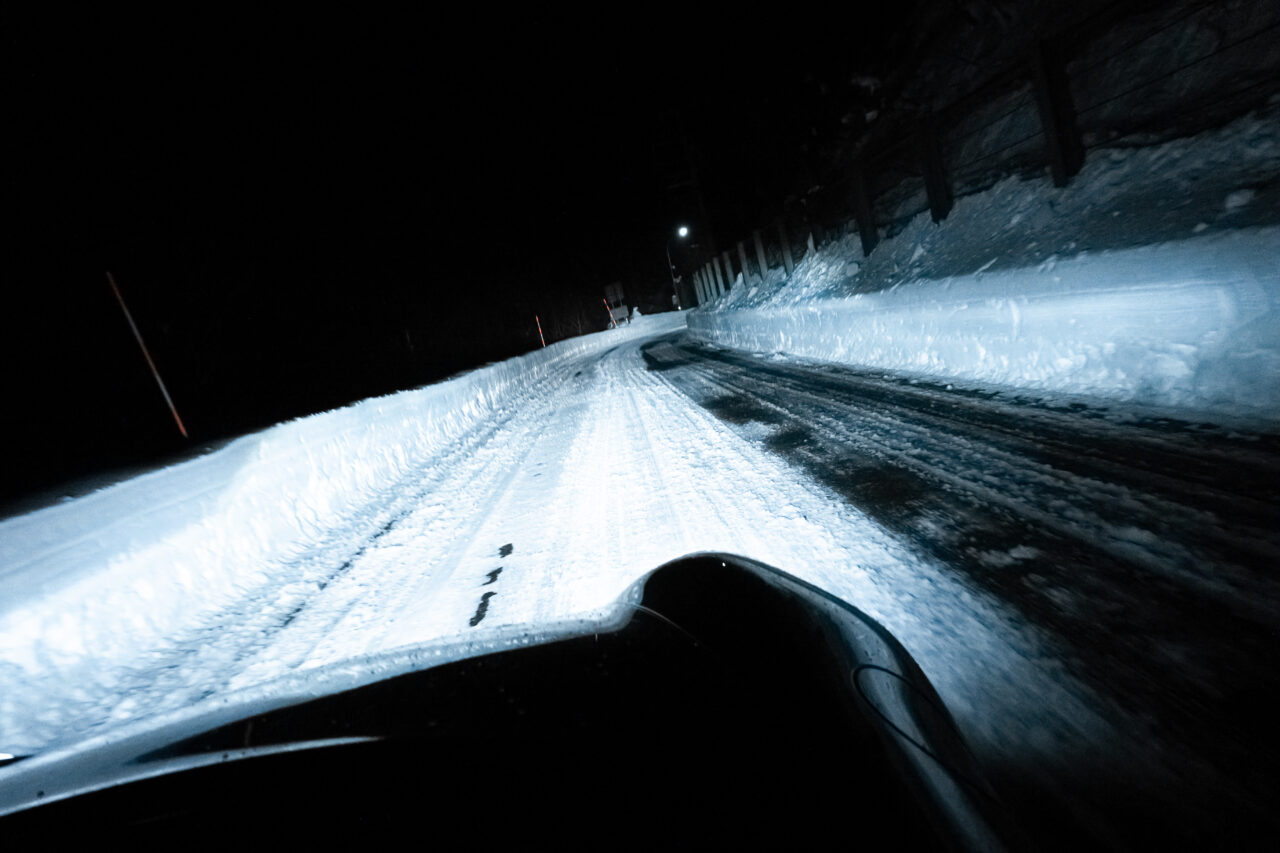
Even at such low temperatures, applying traction in 2nd and 3rd gear, the winter tires’ grip was incredible. And with four-wheel drive, I confidently powered through the winding roads. Opening the window slightly, the piercing cold air entered, and only the roar of the flat-six echoed through the dark mountains.
As the elevation rose, the snow on the road increased. I slowed down considerably and proceeded cautiously. When driving on snow, braking is especially critical. Minimizing brake use is key to driving safely.
The Excellence of Porsche’s Four-Wheel Drive Control (PTM)
Watching the PTM (Porsche Traction Management) front-to-rear torque distribution on the meter panel, I noticed the control was completely different from before.
On dry roads, almost all torque goes to the rear wheels, with a front-to-rear distribution of about 1:9 to 2:8 during starts and acceleration. But as soon as I started driving on even a little snow, PTM seemed to “see” the road conditions and began sending more torque to the front wheels.
As a driver, I felt no slipping at all—even when occasionally driving over scattered snow, the PTM control changed. Even after returning to snow-free roads, this control continued, maintaining a front-to-rear distribution around 3:7 to 5:5.

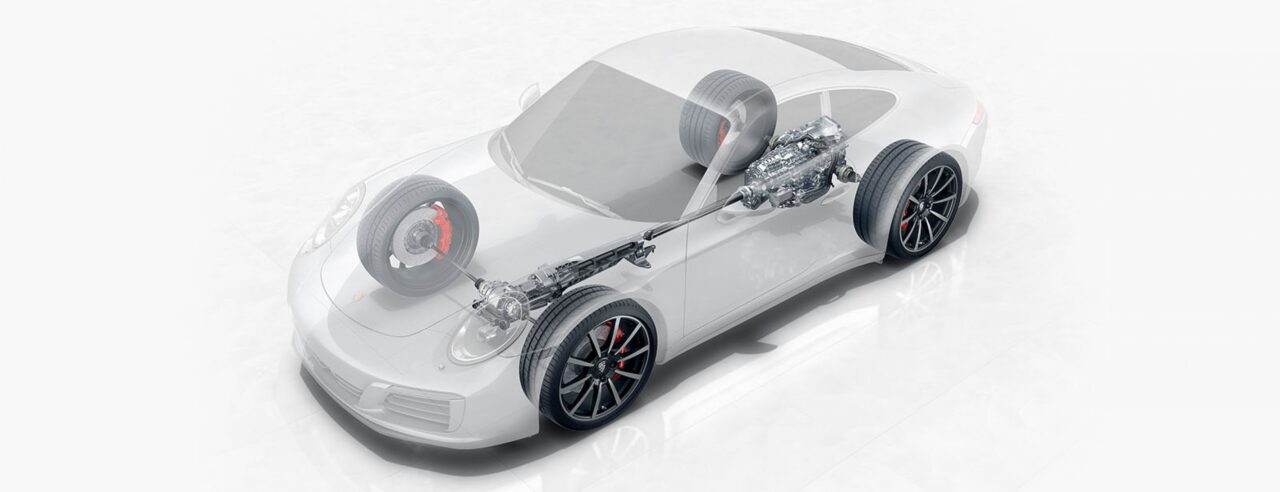
The four-wheel drive system of the 991
Trying a start on a snow-free road, the car still launched with a 3:7 to 4:6 distribution, as if the 911 “knew” it was driving in an area where snow might be present. This made the driving very stable. Rather than a cheap control that only sends torque to the front wheels after slipping, PTM anticipates and controls well ahead of the driver’s awareness, as I realized this time.
Impressed by the precision of the Carrera 4’s four-wheel drive control, I approached the mountain pass where snow was now fully accumulated. In the pitch dark, I trusted my 911 completely and pushed through the snow. The fear faded, replaced by pure enjoyment.
I wished this situation would last a little longer, but soon I turned left onto Route 179 and headed toward Tsuyama.
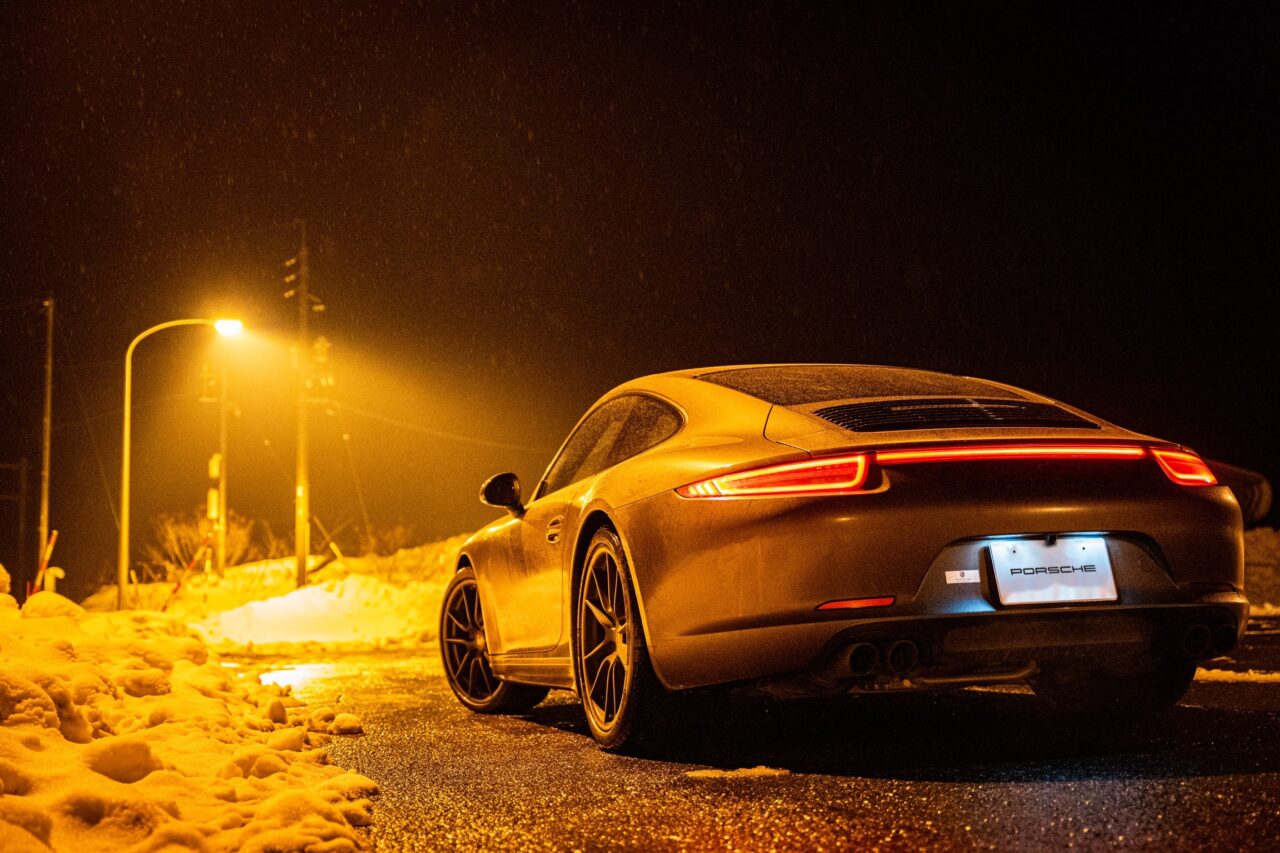
Driving on Wet Roads in Winter
Route 179 is also a wonderful road with little traffic, one of my favorites.
Since it was nighttime, traffic was even lighter. The snow on the road had completely melted, leaving a surface closer to heavy wet conditions.
Even so, winter tires offer outstanding water drainage and wet grip, allowing very confident driving. This is one of the major differences from studless tires and one reason I insist on winter tires.
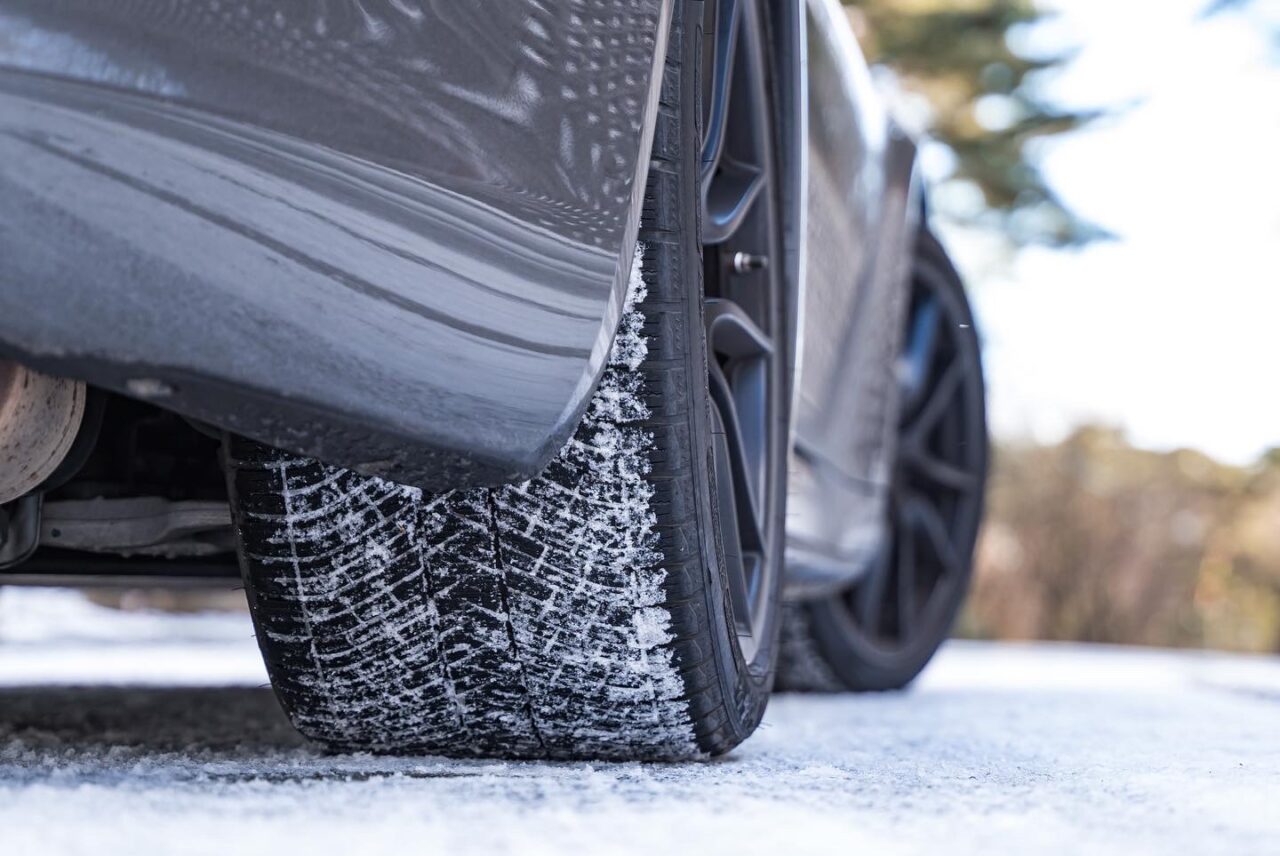
Recent studless tires have improved wet performance, but generally, studless tires sacrifice wet grip to enhance ice performance.
However, outside heavy snowfall areas, most Japanese roads are quickly cleared and treated with deicing agents, so driving on wet, low-temperature roads with melting snow water is much more common than on snow-covered roads. That’s why I choose winter tires over studless tires.
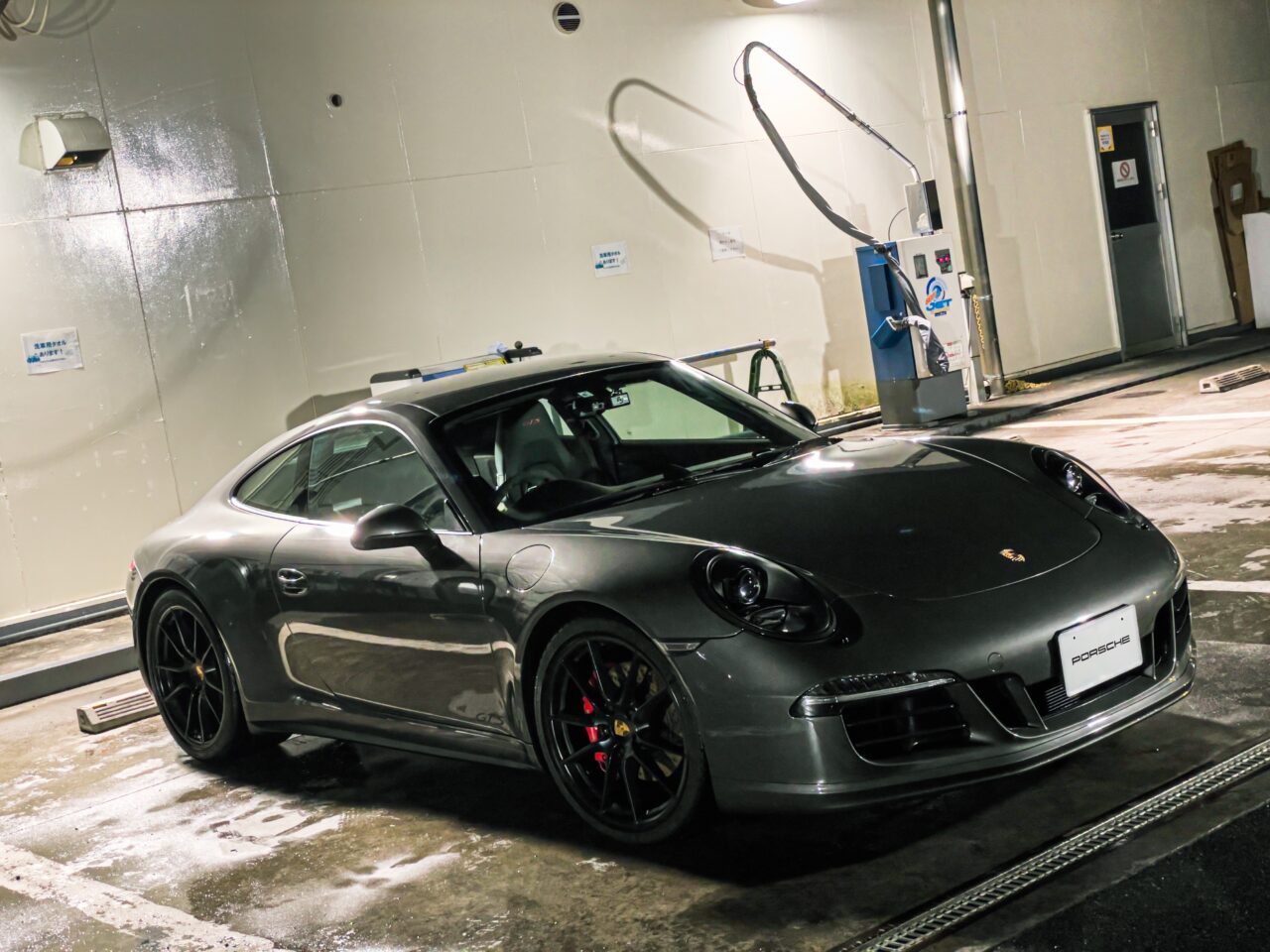
By the time I arrived in Tsuyama, the 911 was covered in mud and dirt. While refueling at a gas station, I washed the car. Riding the freshly shining 911 again, I headed to the hotel in town.
To be continued.
このブログが気に入ったらフォローしてね!


Comment ( 0 )
Trackbacks are closed.
No comments yet.